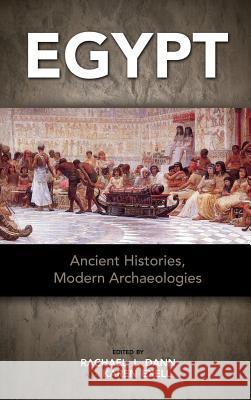Egypt: Ancient Histories, Modern Archaeologies » książka
Egypt: Ancient Histories, Modern Archaeologies
ISBN-13: 9781604978490 / Angielski / Twarda / 2013 / 256 str.
The book covers Egyptian history from the Predynastic to the late Roman Period. It also introduces early contemporary literary references to ancient Egypt and uses a number of theoretical approaches to interrogate the archaeological and textual data. Egyptology and Egyptian archaeology are often viewed as insular disciplines, with their own special history and set of material remains. The kinds of theoretically informed approaches and analyses with which the wider archaeological discipline has engaged over the past decades has often been viewed with scepticism, in terms of what it has to offer to a discipline whose historical materials seem to be so rich and varied. The reason for this study is to challenge such insularity and to demonstrate the utility of integrating theoretical ideas with specific studies of ancient Egyptian material. The chapters in this volume explore a variety of ancient and modern Egyptian material and practices, from a wide range of prehistoric and historical periods, entwining interpretation of source material with explicitly theoretical approaches to provide new perspectives and interpretations of aspects of the Ancient Egyptian past. This volume is one of the first to demonstrate the emerging interdisciplinary nature in Ancient Egyptian studies and the first to suggest new avenues of approach whilst seeking to open a discussion about how the Egyptian past can be known and understood. The book engages with wider trends from the humanities, which have found currency in archaeological studies, such as materiality, performativity, corporeality, embodiment, identity, and popular culture studies. Egyptian material is explored via these themes, to create nuanced and contextual interpretations of particular sites, events, artefacts and practices. Egypt: Ancient Histories, Modern Archaeologies makes an important contribution to furthering the fields of Egyptology and Egyptian archaeology, as well as in the wider context of archaeological theory











